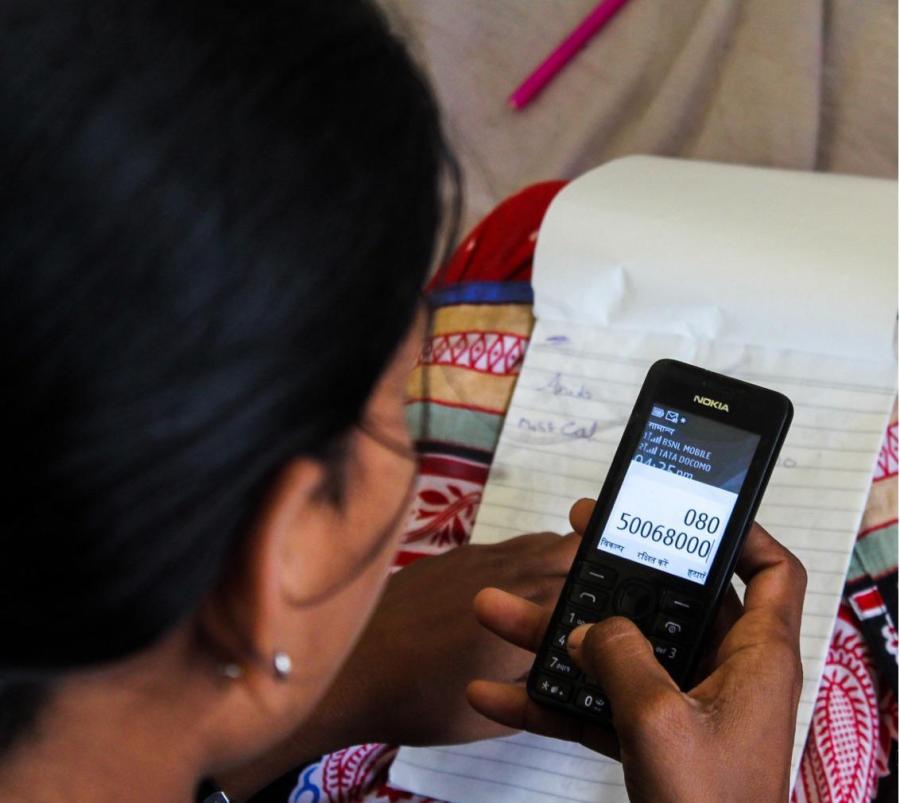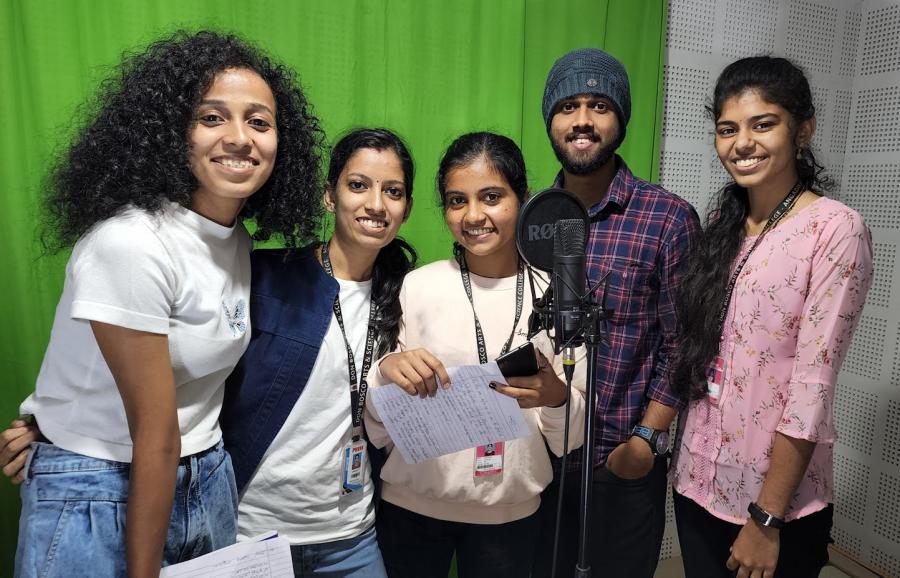I come from a peasant family, and my forefathers were farmers. I was born and grew up in a hilly jungle hamlet hemmed in by bamboo, ferns, and tall deb daru (conifer) trees that change colors throughout the day. Our Lepcha village, called Lower Bom (“Bom” means “flower bud” in the Lepcha language), lies about 10 miles from the hill towns of Darjeeling and Kalimpong in India’s West Bengal state. In the far distance, the landscape blurs into the mist over Mount Kanchenjunga—the great peak that forms a backdrop for our tribal villages. Our vast valley breaks into wavy grasslands that spread along the banks of two rushing streams, the Rangeet and the Teesta, which meet at Pasok, in the foothills of Kalimpong.When I was a child, my father would wake me up early in the morning to prepare me for a long walk up the high Himalayan valley to a distant crop field, where he worked to make our living. Getting out of the bed in the wee hours was not that bad, because my father was an inveterate storyteller. I knew that dozens of folktales were waiting to be told as we passed the poor Lepcha tribal homes of Lower Bom village.
My father would stop at Pasok for a while to rest. Then, looking up at the streams, he would start a song, “Rangnyoo-Rangeet,” which narrates the story of the wild hill-bird Toot Pho and the mountain snake Paril Bu, who were best friends. Everyday, they’d see each other and talk about the unhappy isolation of the two streams. The two friends wanted the streams to fall in love and merge together into one eternal river. The streams listened to their wishes and ended up joining together, although they kept the blue and grey of their waters separate, like a beautiful lady’s two strands of hair. We, too, have mingled with a great stream of people, yet we retain our identity as an Indigenous tribal community.
Recently, Western lifestyle and a large-scale influx of people from southern Nepal and Bhutan have been changing our people and our culture. Day by day, the place has become more and more crowded, and an assimilation of our people is taking place. We see political boundaries being created. Although we are basically peace-loving people, and our ancient tribal rituals coexist with different religious faiths like Buddhism and Christianity, we’ve started asserting our community aspirations, because our traditional tribal nature is getting marginalized economically and culturally. This is our situation.
Bom is a farmers’ village. Our family still owns a small strip of ancestral cropland. The main crops that we grow are rice, maize, a wide variety of vegetables, and apples. I live with my wife and two sons. My wife looks after the land. We follow our traditional agriculture and we use organic fertilizers. We would never use chemical fertilizers to grow high-yielding crops.Almost 99 percent of the people that live in 120 villages here in the Kalimpong area at an altitude of 5,000 to 7,000 feet are subsistence farmers who plow their family plots to grow some crops for day-to-day consumption. The farmers don’t sell their crops in the market; they depend on small land holdings and can’t produce enough crops for the open market. The average yield from these plots is inadequate to sustain a family throughout the year, so economically these families are very poor indeed. What is more, the recent dry monsoon years make things even worse. Then the farmers eat practically anything, like wild roots or creepers.
Lepcha children must speak Nepalese or English in government schools, so the Lepchas are not a well-educated people. As a result, our tribesmen are virtually excluded from all kinds of developmental work. They live like a poor linguistic minority without basic amenities and entitlements. We do not have electricity, drinking water sources, and a regular source of livelihood. Because there is practically no electric power in these remote villages, we use kerosene lanterns at night, but the kerosene is not always cheap or freely available. Above all else, we find it hard today to preserve our culture, customs, and language. As a result, our people of this hilly region have hardly any options. They must depend on the people who live in the plains for all kinds of day-to-day needs, including food and water.
Despite the fact that the Lepcha people of northeast India were recognized as an Indigenous tribe by United Nations Charter 309, our tribal community now lives like a minority in our own land. According to the 1991 census, the number of Lepcha speakers in India stood at 39,342, but the government has totally ignored our Native language, which has its own unique script. Our culture is being attacked from the outside. Our children can’t cope with foreign cultures and languages, so in West Bengal, we are lagging behind in all walks of life. The linguistic minorities like the Lepchas are losing ground. Nobody pays any heed to what we are saying.We are trying to address the lack of education and poverty in our tribal society. For instance, we are running six drinking-water projects in these villages, and we are doing it all by ourselves. We have submitted a petition to the government of India to recognize the ancient Lepcha language. The local government in West Bengal always swears that it honors and respects the Native languages, but it has done precious little to support them. The minority languages, including Lepcha, have not been introduced in our local schools.
So, instead of waiting for government support to revive our cultural tradition and to keep our language alive, we have opened our own Lepcha schools. So far, we have started 44 Lepcha night schools. These are cultural centers, where our children teach our traditions to foreigners, who in turn also teach English and literature to the children.
In 2003, the UK-based nonprofit Africa and Asia Venture first started the Gap Year teaching program in eight Lepcha villages in Kalimpong. Under a four-month-long program, teenage students from Britain and Belgium—who have just completed secondary school—come for stays in Kalimpong villages to learn about Lepcha culture. They stay in cottages as paying guests, eat home-cooked meals, and help their Lepcha family hosts in cooking, milking, and plowing land. Along with learning Lepcha songs, dances, and poems, some may try archery, which is one of the ancient games of the Lepcha tribe. Some of these foreign students compiled the Lepcha-English Encyclopedic Dictionary. During the morning and evening hours, the foreign students teach English to Lepcha children and young adults.
I am the president of the Lepcha Indigenous Tribal Association of Kalimpong, which represents the Indigenous voice of the Lepcha people, our culture, and language. My father, Sambo Chrising Tamsang, was the panyasm (tribal chief) of our community and the founding president of the association. Our goal is to unite the community so that we can protect our ethnicity and cultural identity. Lepcha language speakers originally were one the Indigenous tribes of the Sikkim state in North East India. They are now living in different parts of the country and the world, especially North Sikkim and Nepal. In December of 2009, we had a mass gathering at Kalimpong on the occasion of the 227th birth anniversary of our king Gyabu Achok. At this ceremony, with more than 20,000 Lepchas present from different parts of the country, we took an oath to preserve our ancient language and culture. We celebrated our traditions, wearing our colorful tribal clothes and ornaments.
In addition to farming the land for a living, I have tried to educate myself. I have learned the English language. I edit two bilingual Lepcha magazines, Aachuley and Pano Gaebu Achyok. We publish articles on Lepcha language and culture and get contributions from different parts of the world. These days, I spend most of my time editing books in the Lepcha language and editing the magazines. Additionally, I help my Lepcha people to understand their roots, language, and culture.
Our tradition has it that there was an ancient land called ne mayel lyang (“the hidden paradise”) in the highlands of the Himalayan mountains, where lived the peace-loving children of the mountains who called themselves mu-tanchi-rongkup rumkup, (the “children of the Rong and of God”). The Lepchas also refer themselves as rongpas, (“the dwellers of the valley”). My forefathers were farmers, but they had another identity. They were warriors, too, who were engaged in protecting our land and its people from invaders. History holds that the Gorkhas invaded our land in 1760, and these Lepcha warriors joined a great battle to keep the invaders away. Even today, we are very serious about protecting our damsangs or the fortified places where our ancient security guards used to fight against the invaders.
In recent times, we have made a great move to preserve Dzongu, our holy place of worship, which we refer to as Kaokaram Faokram (the origin of Lepcha existence). Dzongu is where God created Nazaong (the first Lepcha man) and Nyooking (the first Lepcha woman). Located in North Sikkim in India, Dzongu is the destination of an annual Lepcha pilgrimage. The region has plenty of sacred sites: caves where Guru Rinpoche meditated, the Keshong Lake, the Kongsa hot springs, and the Tholung temple, which is not only revered by Lepchas, but by all the Buddhists of Sikkim. Dzongu represents the last bastion of the Lepcha cultural heritage and the only place where we feel free to follow our distinctive cultural and religious traditions.
All Lepchas were deeply disturbed when we heard that 26 hydropower projects were to be built on our holy place of worship. Our Indigenous community members and other concerned nongovernment organizations actively opposed the projects, fasting for days. As a result, the government of Sikkim shelved four of the projects. For the Lepcha people, this was quite an achievement, and a sample of what we hope to accomplish in the future.
For more on the Lepcha people and links to Lyansong Tamsang’s magazines, visit the Cultural Survival website, www.cs.org. This article is based on an interview conducted by freelance writer Biswajit Chakraborti.



